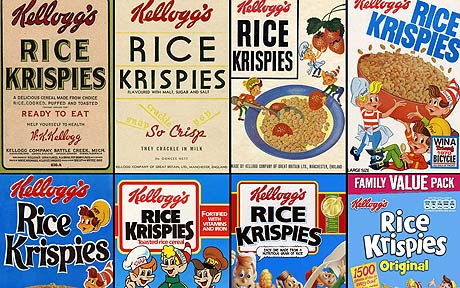The breakfast cereal, which gave Jonathan Ross his TV debut in an advert in 1970 aged 10, first came to Britain from America on November 10, 1928.
Marketed as “the talking cereal” – because of the sound it made when milk was poured onto it – it was initially sold by door-to-door salesmen.
Within eight years Brits were devouring around 1.5 million boxes a year, forcing American cereal company Kellogg‘s to open a factory in Stretford, Manchester.
Even a brief halt in production during the rice shortage of the Second World War failed to slow its sales and now more than 20 million boxes are bought every year in the UK.
The much-loved household cereal has even been evolved to suit the nation’s palette over the years, with salt reductions in the 1990s and sugar reductions earlier this year.
A spokesperson for Kellogg‘s said: “It’s great to see Rice Krispies clock up 90 years on the nation’s breakfast table and we don’t think Snap, Crackle and Pop look that bad for their age either.”
Rice Krispies were invented in Battle Creek, Michigan, USA, in the mid-1920s by William Keith Kellogg.
The popular Snap, Crackle and Pop characters first appeared in radio jingles in 1932 and a year later a gnome wearing a baker’s hat appeared on the side of a packet introducing Snap to the British public.
The other two gnomes Crackle and Pop appeared with Snap in adverts and on boxes a few years later. Famous TV adverts include a jingle by the Rolling Stones in 1963.
Do you know the science of the Snap, Crackle and Pop? When the rice grain is cooked it is filled with air. When milk is added, the Rice Krispies starts to absorb the milk, forcing the air inside to ‘escape’ and the wall break, creating the ‘snap, crackle and pop’. If you look carefully enough you can also see air bubbles on the surface of the milk.







